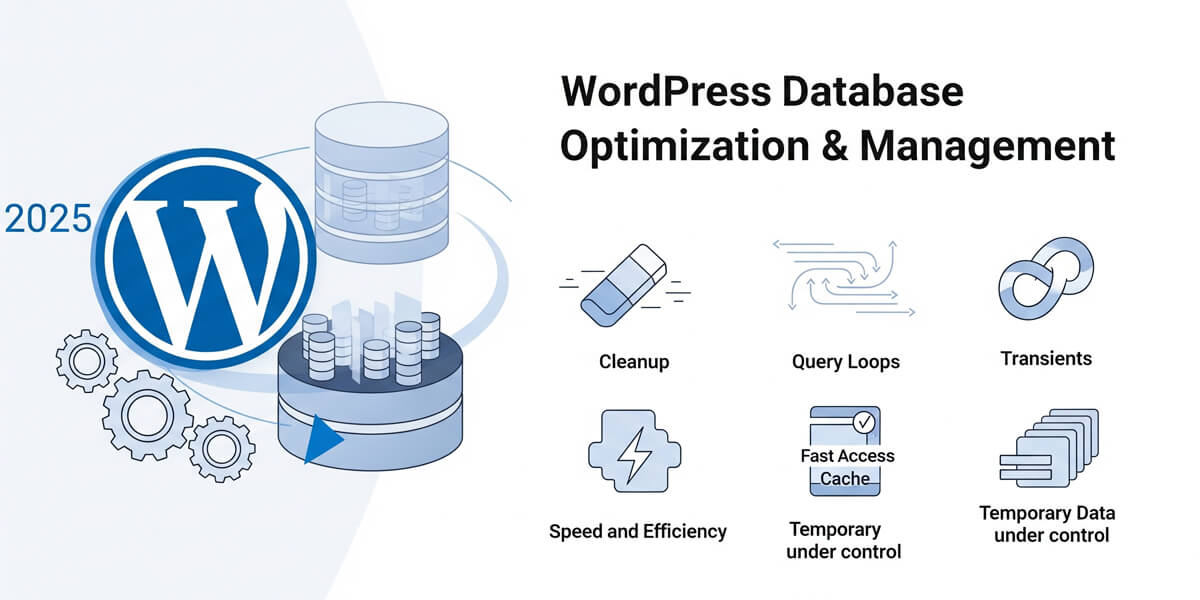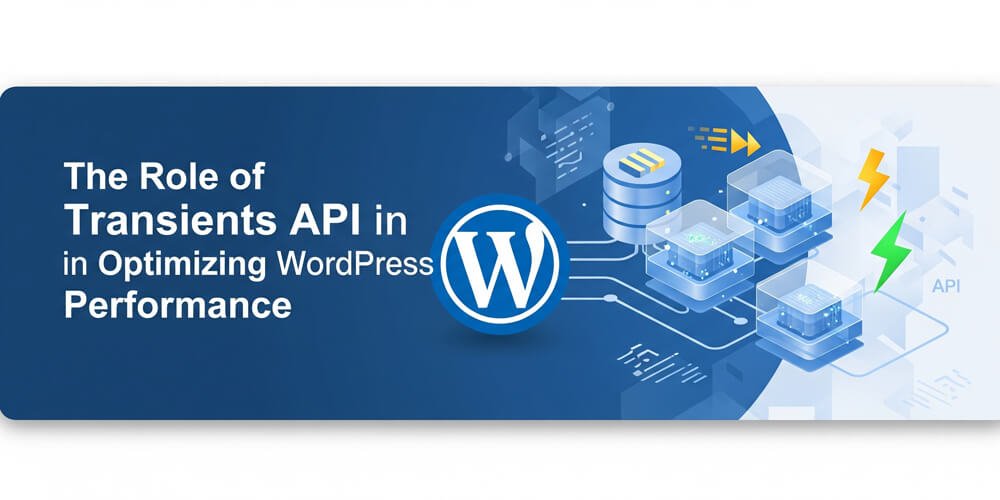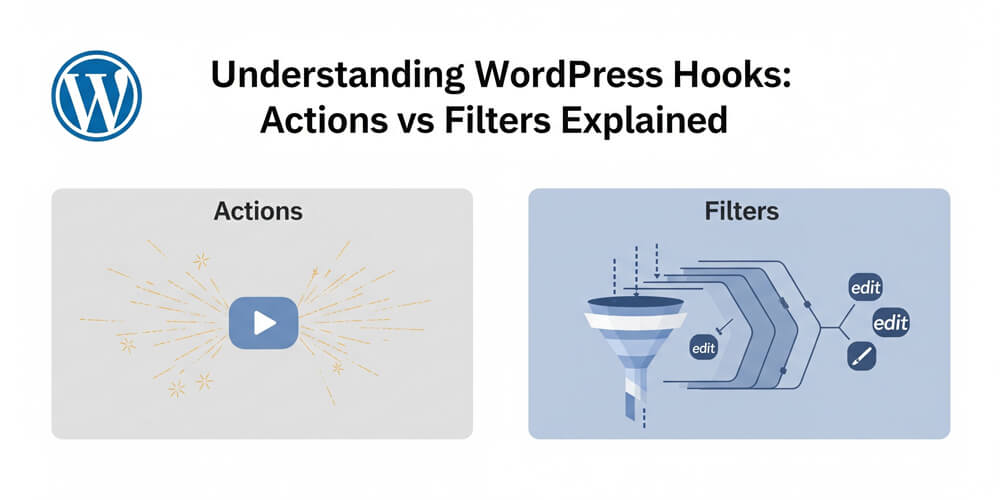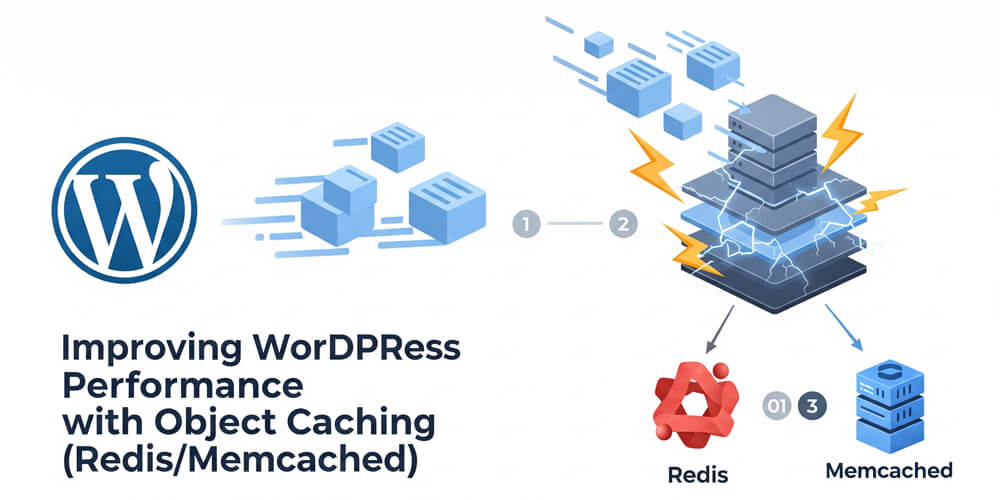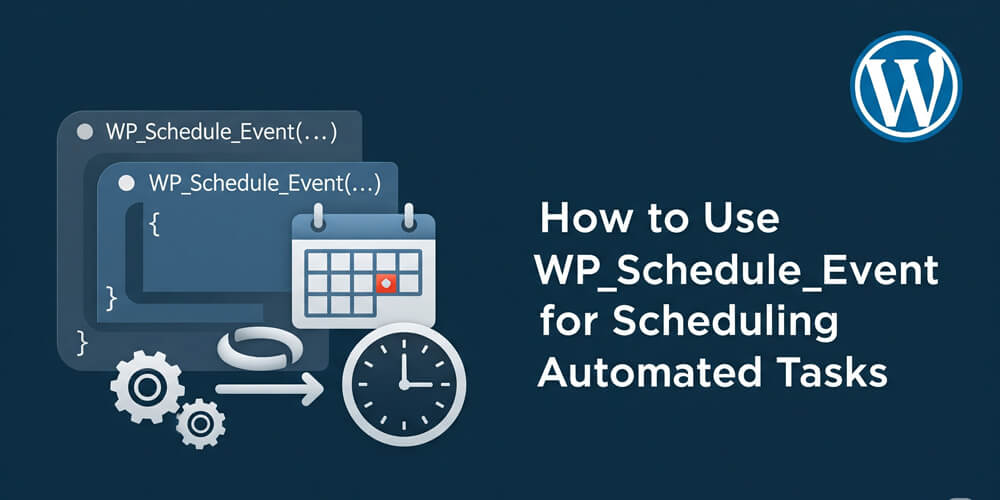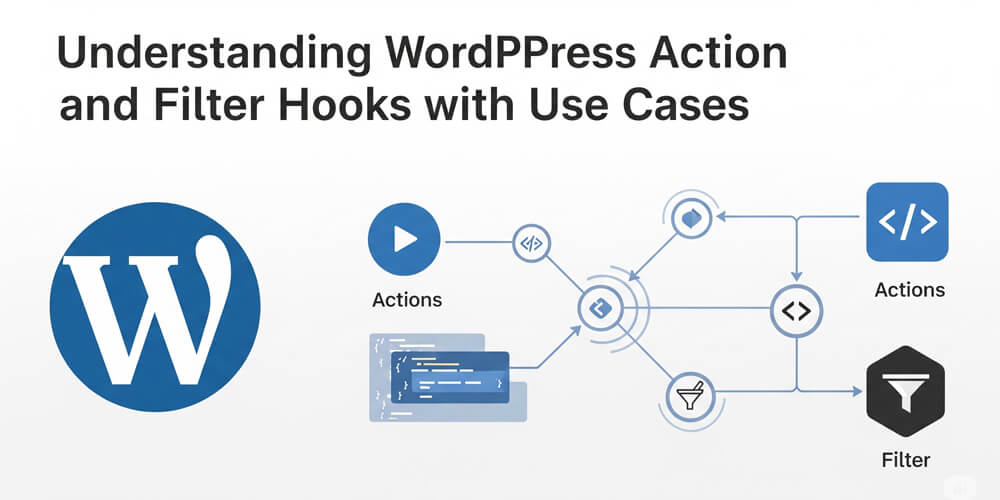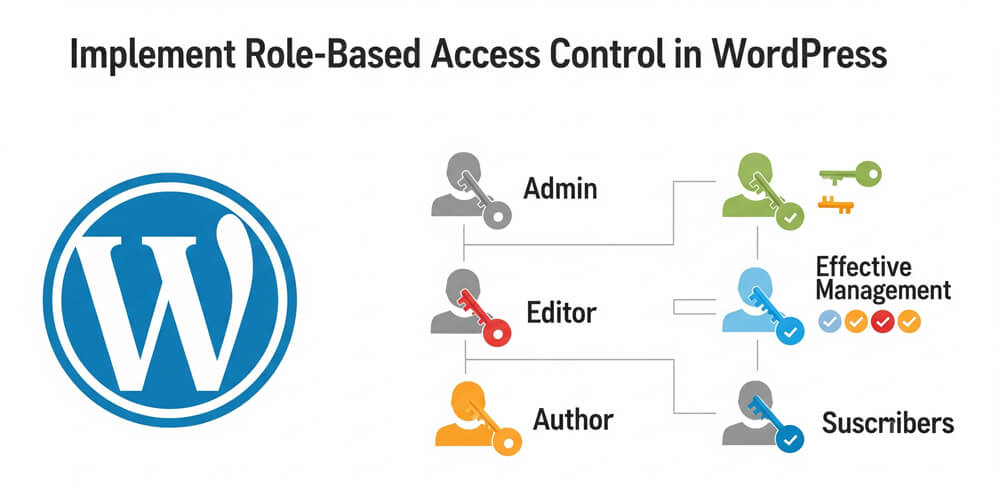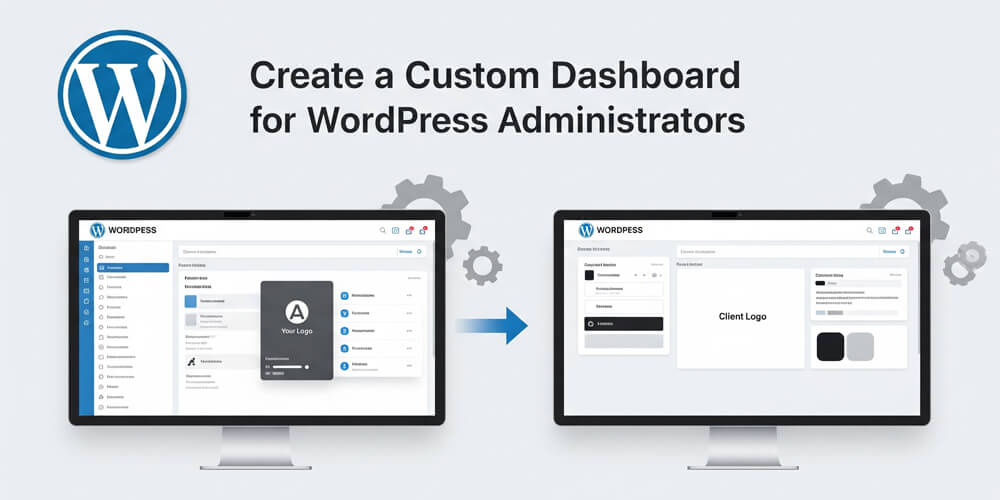Welcome to WordPress Database Optimization & Management! As we move into 2025, the importance of a well-optimized WordPress database has never been greater. With WordPress powering over 40% of all websites, database performance directly impacts everything from page speed and SEO rankings to user satisfaction and business growth. A sluggish or bloated database can lead to slow load times, higher bounce rates, and even lost revenue—issues that are magnified as your site scales or traffic surges.
This comprehensive, technical guide will walk you through the essential strategies and tools for optimizing and managing your WordPress database. You’ll learn how to identify and remove unnecessary data, streamline query loops, leverage the Transient API for caching, and implement advanced management techniques like indexing and monitoring. We’ll also cover best practices for regular maintenance, backups, and security—ensuring your database remains fast, reliable, and resilient against threats.
Whether you’re a developer, site owner, or performance enthusiast, this guide is packed with actionable insights and up-to-date recommendations tailored for 2025. By following these steps, you’ll not only boost your site’s speed and scalability but also create a smoother experience for your visitors and improve your search engine visibility.
Let’s dive in and transform your WordPress database into a high-performance engine that powers your site’s success in 2025 and beyond!
Table of Contents
Open Table of Contents
- Why Database Optimization Matters in 2025
- 1. Understanding the WordPress Database
- 2. Database Cleanup
- 3. Optimizing Query Loops
- 4. Leveraging the Transient API
- 5. Advanced Database Management
- 6. Backup & Security
- 7. Tools for Database Management
- 8. 2025 Database Checklist
- 9. Database & Site Success
- Final Thoughts
Why Database Optimization Matters in 2025
In 2025, website visitors expect instant page loads and seamless experiences. The WordPress database is the engine behind your site, powering everything from blog posts and settings to user accounts and plugin data. As your site grows, so does the database—accumulating revisions, metadata, and temporary records that can slow things down if left unchecked. Regular optimization ensures your database remains efficient, supporting fast queries, reliable uptime, and better SEO. Whether you run a personal blog or a high-traffic business site, understanding why and how to optimize your WordPress database is essential for long-term success.
Your database stores posts, settings, and user data—inefficiencies compound over time:
- Speed: Slow queries increase load times; 53% of users leave if pages take 3+ seconds (Google, 2024).
- Scalability: High-traffic sites crash without optimization.
- SEO: Fast sites rank higher—see Improve Core Web Vitals for Your WordPress Site.
- Cost: Efficient databases reduce hosting needs.
- Reliability: Clean data prevents errors.
Stat Alert: Optimized databases cut load times by 30%+, per 2024 WP Engine data. Boost performance in 2025!
1. Understanding the WordPress Database
The WordPress database is the backbone of your website, storing everything from posts and pages to user accounts, plugin settings, and site options. Understanding its structure is crucial for effective optimization and troubleshooting. Each time a visitor loads your site, WordPress queries the database to retrieve content, settings, and metadata. Over time, as your site grows, the database can accumulate unnecessary data and become less efficient. By learning how the WordPress database is organized and what each table does, you’ll be better equipped to maintain performance, prevent issues, and make informed decisions about cleanup and optimization.
WordPress uses MySQL to store content and settings in tables like wp_posts, wp_options, and wp_usermeta.
1.1 Key Tables
- wp_posts: Stores posts, pages, revisions.
- wp_postmeta: Post metadata (e.g., custom fields).
- wp_options: Site settings, transients.
- wp_comments: Comments and metadata.
- wp_terms: Categories, tags.
1.2 Common Issues
- Bloat: Revisions, transients, spam comments.
- Slow Queries: Unindexed or complex queries.
- Fragmentation: Inefficient table storage.
2. Database Cleanup
A clean database is the foundation of speed. Over time, WordPress databases accumulate unnecessary data—post revisions, spam comments, orphaned metadata, and leftover plugin tables—that can slow down your site and increase server load. Regular cleanup not only improves performance but also reduces the risk of errors and makes future maintenance easier. In this section, you’ll learn practical strategies for identifying and removing bloat, optimizing tables, and scheduling automated cleanups. Whether you manage a personal blog or a large business site, these steps will help keep your WordPress database lean, fast, and reliable.
2.1 Remove Unnecessary Data
- Revisions:
- Limit in
wp-config.php:define('WP_POST_REVISIONS', 5); - Delete via plugin or SQL:
DELETE FROM wp_posts WHERE post_type = 'revision';
- Limit in
- Spam/Trash:
- Clear via Dashboard > Comments > Trash.
- SQL:
DELETE FROM wp_comments WHERE comment_approved = 'spam' OR comment_approved = 'trash';
- Unused Metadata:
- Remove orphaned meta:
DELETE FROM wp_postmeta WHERE post_id NOT IN (SELECT ID FROM wp_posts);
- Remove orphaned meta:
- Plugins: Use WP-Optimize or Advanced Database Cleaner.
2.2 Optimize Tables
- Why: Defragment tables for faster queries.
- How:
- phpMyAdmin: Select tables, choose “Optimize table.”
- WP-CLI:
wp db optimize - Plugin: WP-Optimize (free).
- Frequency: Monthly for busy sites.
2.3 Schedule Cleanups
- Plugin: WP-Optimize or WP-Sweep.
- Steps:
- Install WP-Optimize.
- Go to WP-Optimize > Database.
- Enable scheduled cleanups (weekly).
- Guide: See Detailed WordPress Database Optimization Guide for step-by-step.
Caution: Backup before cleanup—use UpdraftPlus (Set Automated Backups for WordPress).
3. Optimizing Query Loops
Efficient queries reduce database load.
Optimizing query loops is essential for maintaining a fast and scalable WordPress site, especially as your content and traffic grow in 2025. Every time your site displays posts—on the homepage, archives, or custom listings—WordPress runs database queries to fetch the relevant data. Poorly optimized queries can quickly become a bottleneck, slowing down page loads and increasing server resource usage. In this section, you’ll learn how to write efficient query loops, avoid common pitfalls, and leverage best practices to ensure your database delivers content quickly and reliably. Whether you’re building custom themes or troubleshooting slow pages, mastering query optimization is key to a high-performing WordPress site.
3.1 Understanding WP_Query
- What: WordPress’s query engine for fetching posts.
- Example:
$args = [ 'post_type' => 'post', 'posts_per_page' => 10, ]; $query = new WP_Query($args); while ($query->have_posts()) { $query->the_post(); the_title(); } wp_reset_postdata();
3.2 Optimization Tips
- Limit Fields: Use
'fields' => 'ids'for ID-only queries.$args = ['post_type' => 'post', 'fields' => 'ids']; - Avoid Meta Queries: Slow; cache results if needed.
- Pagination: Use
'posts_per_page'to limit results. - No Found Rows: Add
'no_found_rows' => truefor non-paginated queries.$args = ['post_type' => 'post', 'no_found_rows' => true];
3.3 Debug Queries
- Plugin: Query Monitor to identify slow queries.
- Code: Enable query logging:
define('SAVEQUERIES', true); print_r($wpdb->queries); - Guide: Learn more at WordPress Query Loops.
Pro Tip: Cache query results with transients for heavy loops.
4. Leveraging the Transient API
Transients store temporary data to reduce database hits.
The WordPress Transient API is a powerful tool for improving site performance by caching the results of expensive database queries or remote API calls. Instead of running the same slow query or fetching external data on every page load, you can store the result in a transient—a temporary value saved in the database (or object cache, if available) with an expiration time. This reduces server load, speeds up page rendering, and helps your site scale under heavy traffic. In this section, you’ll learn how transients work, when to use them, and best practices for leveraging them to keep your WordPress site fast and efficient in 2025.
4.1 Why Use Transients?
- Speed: Cache expensive queries or API calls.
- Scalability: Ideal for high-traffic sites.
- Example: Cache social media follower count.
4.2 How to Use
- Set Transient:
if (false === ($data = get_transient('my_data'))) { $data = fetch_expensive_data(); // e.g., API call set_transient('my_data', $data, 12 * HOUR_IN_SECONDS); } echo $data; - Delete Transient:
delete_transient('my_data'); - Clean Expired:
- Plugin: WP-Optimize.
- SQL:
DELETE FROM wp_options WHERE option_name LIKE '_transient_timeout_%' AND option_value < UNIX_TIMESTAMP();
4.3 Best Practices
- Expiration: Set reasonable timeouts (e.g., 12 hours).
- Object Cache: Pair with Redis/Memcached—Improving WordPress Performance with Object Caching: Redis & Memcached.
- Avoid Overuse: Reserve for heavy queries.
- Guide: See WordPress Transient API Role for examples.
5. Advanced Database Management
Advanced database management is essential for WordPress sites that have outgrown basic optimization or experience high traffic and complex workloads. As your site scales, you may encounter challenges like slow queries, table bloat, or the need for more robust data handling. This section explores strategies and tools for taking your database management to the next level—covering indexing, splitting databases, and monitoring performance. By implementing these advanced techniques, you can ensure your WordPress site remains fast, reliable, and ready to handle future growth.
Go deeper for large or high-traffic sites.
5.1 Indexing
- Why: Speeds up searches on large tables.
- How: Add via phpMyAdmin or SQL:
CREATE INDEX idx_post_date ON wp_posts(post_date); - Caution: Consult a DBA; improper indexes slow writes.
5.2 Splitting Databases
- What: Separate DB for high-traffic sites (e.g., read/write replicas).
- Plugin: HyperDB for multi-DB setups.
- Hosting: Managed hosts (Kinsta, WP Engine) support replication.
5.3 Monitoring
- Tools:
- Query Monitor: Tracks query performance.
- New Relic: Server-level insights.
- Metrics: Aim for <50ms query times.
- Frequency: Check weekly for bottlenecks.
6. Backup & Security
Protecting your WordPress database is just as important as optimizing it. In 2025, threats like hacking, data loss, and server failures are more common than ever, making regular backups and strong security practices essential for every site owner. A single mistake or attack can wipe out years of content and user data, but with the right precautions, you can recover quickly and keep your site safe. This section covers the key steps to safeguard your database—ensuring you’re prepared for the unexpected and your site remains secure, reliable, and resilient.
Protect your database from loss or attacks.
6.1 Backups
- Plugin: UpdraftPlus for automated backups.
- Steps:
- Install, connect to cloud (Google Drive, Dropbox).
- Schedule daily DB backups.
- Link: Set Automated Backups for WordPress.
6.2 Security
- Harden: Limit DB user permissions in cPanel.
- Plugins: Wordfence, iThemes Security—Best WordPress Security Plugins: Keep Your Site Safe in 2025.
- SQL Injection: Use
$wpdb->prepare:$wpdb->prepare("SELECT * FROM wp_posts WHERE ID = %d", $post_id); - Link: Secure WordPress Site from Hackers: 2025 Edition.
7. Tools for Database Management
Managing your WordPress database effectively requires the right set of tools. In 2025, a variety of plugins and utilities make it easier than ever to clean, optimize, monitor, and troubleshoot your database—no matter your technical skill level. Whether you prefer a user-friendly dashboard, command-line control, or advanced cleanup features, there’s a solution to fit your workflow. This section highlights some of the most popular and reliable tools for WordPress database management, explaining what each does and why it’s valuable. By leveraging these tools, you can streamline maintenance, catch issues early, and ensure your site’s database remains fast, efficient, and secure.
| Tool | Purpose | Why It’s Great |
|---|---|---|
| WP-Optimize | Cleanup, optimization | Free, user-friendly |
| Query Monitor | Debug queries | Pinpoints slow spots |
| Advanced Database Cleaner | Deep cleanup | Handles edge cases |
| WP-CLI | CLI management | Fast, scriptable |
- Explore: More at Database Tag.
8. 2025 Database Checklist
- Clean database: Detailed WordPress Database Optimization Guide.
- Optimize queries: WordPress Query Loops.
- Use transients: WordPress Transient API Role.
- Schedule backups, monitor performance.
- Harden security.
- Explore Database Tag and Database Optimization Tag.
9. Database & Site Success
A well-optimized database is the backbone of a successful WordPress site. In 2025, the difference between a sluggish website and a high-performing one often comes down to how efficiently your database is managed. By following the strategies outlined in this guide—regular cleanup, query optimization, leveraging transients, and using the right tools—you set your site up for long-term success. A streamlined database not only improves speed and scalability but also enhances user experience and search engine rankings. Investing time in database optimization pays off with a faster, more reliable, and more secure WordPress site that’s ready to meet the demands of modern web users.
- Speed: Faster queries delight users.
- Scalability: Handle traffic spikes—Creating Scalable WordPress Sites.
- SEO: Quick loads boost rankings.
- Bonus: Secure it—Secure WordPress Site from Hackers: 2025 Edition.
Final Thoughts
WordPress database optimization and management in 2025 are vital for a fast, reliable site. From cleanup and query loops to transients and indexing, you’re equipped to keep your database lean. Start today: clean revisions, cache a query, or schedule a backup. Dive deeper with Database Tag and Database Optimization Tag for more insights.
Questions? Comment or contact me! Let’s optimize your WordPress database in 2025!

